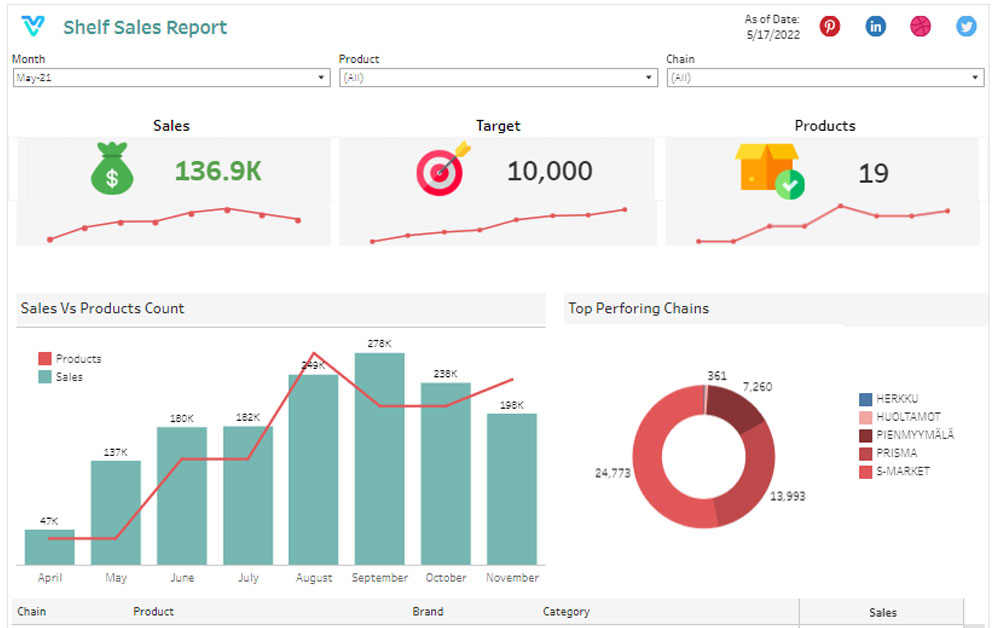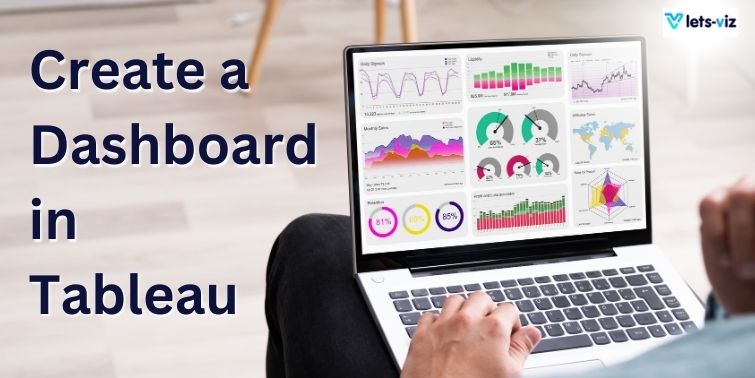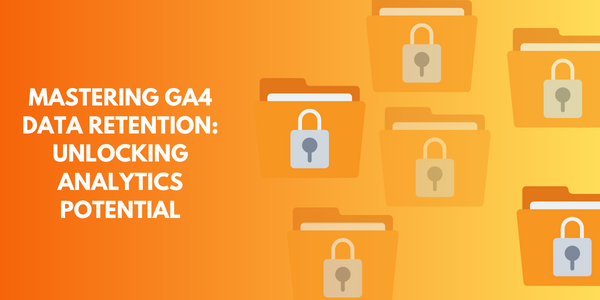Basically, the Tableau dashboard is a higher-level representation of company data from which the reports get generated. With the help of innovative as well as real-time visualization, dashboarding in Tableau enables excellent performance as well as enables people without technical skills to view and make use of the data. The dashboard, typically composed of worksheets, facilitates simultaneous analysis of many different points of view. The dashboard is composed of size, sheets, items, plus tiles.
Whatever dashboard is created in Tableau public or desktop is able to be made available online for public viewing. Additionally, a Tableau Server with the appropriate licenses will be required when you privately distribute worksheets on the cloud.
What Is Tableau Dashboard?
Tableau provides a sophisticated data visualization tool with one of the fastest-growing prospects of rapid growth rates in the business intelligence sector. It facilitates reducing raw data to an understandable format that can be quite easy to comprehend. Professionals throughout all levels of a business might comprehend the data thanks in part to Tableau. Furthermore, it makes it possible for non-technical users to develop a unique dashboard with Tableau. With the assistance of the Tableau application, data analysis is capable of being completed extremely quickly while dashboards plus worksheets are used to produce the visuals.
The Tableau software’s best functionality consists of:
- Data Fusion.
- Real-time evaluation.
- Data collaboration.
One of the best things about Tableau software is the reality that it is capable of being used without any technical or programming experience. People from all areas, particularly businesses, researchers, and even various industries, have shown interest in the tool.
How to Create a Tableau Dashboard?
Users may more quickly glance at all the data with dashboards by viewing all the progress, visualizations, as well as data on one page or screen without switching between numerous tabs or screens. Dashboards modify the visual representation of charts as objects on the display, that can be then simply shifted around the screen as Tiled objects. The following settings can be used to size the dashboard: Automatic, Accurate, Within, and Presets.
Before we begin, let’s quickly go through the numerous Tableau navigation actions that are available:
Dashboard and Layout Tabs
By default, you’ll be working within the Tableau Dashboard tab, which enables you to alter the majority of the Tableau dashboard‘s elements. Using the layout tab, you are able to alter the dimensions as well as the position of specific dashboard elements. All sizes can be seen on the Layout tab in pixels.
Device Preview Button
In this, you would be able to acknowledge, how will your dashboard appear on different kinds of devices. Additionally, you may save several dashboard configurations, allowing it to display differently with respect to the gadget you’re using.
Size
You can specify the height as well as the width of the dashboard in pixels here. You are able to pick a custom size or choose from plenty of default alternatives. When you choose the Automatic option, the dashboard will adjust the size of its various elements to accommodate the screen on which it is being displayed. While this choice seems to be a good fit on the surface, keep in consideration that the display could occasionally not be accurate as well as that it is not truly “responsive.”
Tiled
When dashboard objects are tiled, they cover the entirety of each tile’s available space. Dashboard elements may prove moved as well as resized precisely while they remain floating. The one you choose will primarily be dependent on the circumstances surrounding your use. Each of these layouts offers an individual combination of advantages as well as disadvantages. The majority of Tableau customers appreciate the automated scaling that comes with a tiled layout, we prefer the predictability and quality accuracy that comes with floating elements.
Objects
Text: With the help of this command, a little word processor will appear that enables you to input as well as format any text you choose.
Web Page: Adds a website link within the dashboard.
Horizontal: Creates a horizontal layout container within which more elements can be added.
Vertical: Provides a vertical layout container which one may expand with other elements.
Blank: Fills the dashboard with empty space, which might come in handy when the elements have been placed in a tiled manner as well as being too close to one another.
Image: Add a picture from your computer as an image to the dashboard with Tableau.
Steps To Create a Dashboard:
Here are the complete steps for those who are willing to create a dashboard with Tableau.
Step 1: Click on New Dashboard Button
- Click on the new Dashboard button which is at the bottom of the Tableau Desktop.
- Choose a new dashboard by clicking Dashboard on the navigation bar.
- Change the Dashboard’s name as appropriate.
Step 2: Add Sheets To the Dashboard
- Drag the sheet to the dashboard from the left pane.
- To create a Tableau dashboard, choose the sheet or enter your data.
Step 3: Add Another Sheet
- Your Tableau Dashboard should now include the second sheet.
- By selecting the swap sheet button, you can additionally switch the sheet.
- In Dashboard, you are able to include as many sheets as you would like in any order.
Step 4: Add Interactions to the Dashboard to Personalize It
- There are several choices available in Tableau to modify the Tableau Dashboard.
- The Tableau Dashboard is capable of being personalized with filters, shapes, colors, graphs, as well as additional elements.
- Tableau offers layout containers to assist with making it less difficult for you to put together the items.
- Text objects need to be added in order to offer more information, headers, as well as additional metrics.
- Link additional information on particular objectives using photos or web pages.
- Use Blank objects to change the spacings as well as Navigation objects to offer navigation from one Dashboard to a different one.
Step 5: Check Out the Dashboard
Press F7 to display the Tableau Dashboard in full-screen mode when customizing it.
Step 6: Share Dashboard
To assess as well as work collaboratively on projects, Tableau users may give away dashboards to colleagues as well as peers.
Your dashboard with Tableau is now ready to be accessed after this.
Tableau Dashboard Examples:
Marketing Analytics Tableau Dashboard
Marketing Funnel Tableau Dashboards offer important data across every running Marketing Campaign, particularly their income, reach, and conversion, along with additional metrics of performance.

Customer Service Tableau Dashboard
Customer service Tableau dashboard offers details on each key performance indicator that a helpdesk management team typically takes into account. Dashboard with Tableau provides data on how efficiently the helpdesk manages customer support tickets. A clear design is used to display data that includes the total number of open tickets, closed tickets, average response times, tickets having a given status category, etc.
Conclusion
This blog has shown the value of a dashboard to convey key performance metrics in an easily visible as well as interactive way. Also, we’ve discussed how to create a tableau dashboard. Anyone is able to view the published version using a link that appears under your profile as well as is shown there.
If you’re willing to avail the services of Tableau services, then you must choose Let’s Viz. The tremendous business intelligence and analytics capabilities of Tableau are used by Let’s Viz, a seasoned Tableau consulting company, to provide businesses with actionable insights for strategic decision-making.








